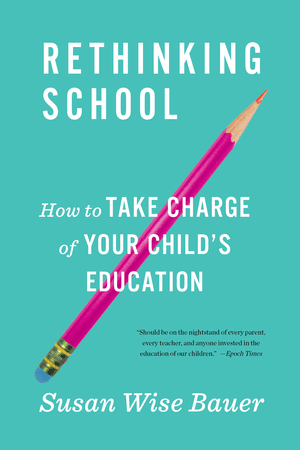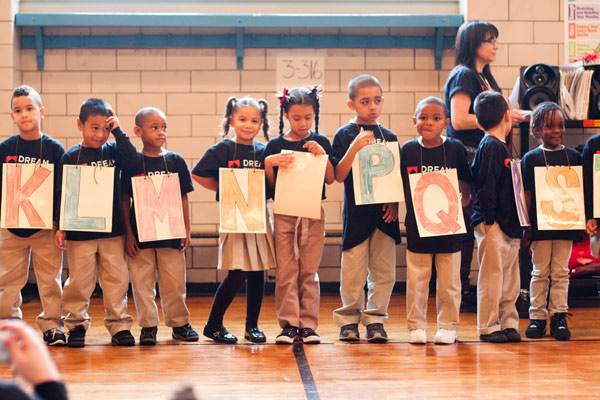Subtotal: $
Checkout-

On Praying for Your Children
-

The World Is Your Classroom
-

The Good Reader
-

Orchestras of Change
-

The Habit of Lack Is Hell to Break
-

Soviet Kindergarten
-

The Given Note
-

Editors’ Picks Issue 19
-

Litanies of Reclamation
-

The Children of Pyongyang
-

How Far Does Forgiveness Reach?
-

A Trio of Lenten Readers
-

Michael and Margaretha Sattler
-

The Blessed Woman of Nazareth
-

New Heaven, New War
-

Born to Us
-

My Fearless Future
-

Covering the Cover: School for Life
-

The Community of Education
-

Readers Respond: Issue 19
-

Family and Friends: Issue 19
-

Verena Arnold
-

Tundra Swans
-

A Debt to Education
-

What’s the Good of a School?

To begin with, the American public school system was a response to immigration. Faced with the challenge of assimilating the “huddled masses” that had arrived on American shores, during the 1840s US Secretary of Education Horace Mann implemented a model invented by the Prussians: age-graded classrooms. Many similar models spread through Europe in the wake of the Industrial Revolution with the goal of educating the urban poor and shaping national identity. Critics, however, compared these efficient and replicable new systems to factories in which children were treated impersonally. Charles Dickens famously satirized British schools in his 1854 novel Hard Times, in which the inauspiciously named Mr. Gradgrind presides over hundreds of “little pitchers” who sit in rows, waiting to be filled with “imperial gallons of facts.”
One and a half centuries later, Susan Wise Bauer follows suit in her book Rethinking School: How to Take Charge of Your Child’s Education. Though American schools today look different than they did in the nineteenth century, their purpose and foundation remains the same, she claims, and her critique, like Dickens’s before her, centers on the incompatibility of an industrial model and the human beings it aims to teach. The way we do school today, she claims, “has nothing to do with the way that actual human beings acquire knowledge.”
Her book arrives at a time of growing dissatisfaction with public education across the nation. Some parents are wary of the increasingly secular environment in public schools, while others object to the standardization of the Common Core. Still others have seen their child struggle under the load of mandated testing. Not coincidentally, the last two decades have witnessed a sharp increase in alternatives. The number of public Montessori schools doubled between 2000 and 2014, and classical and charter schools have expanded at similar, if not higher, rates. Many of these schools have long waitlists.
One of the main drivers of this trend was a book Susan Wise Bauer published with her mother in 1999 called The Well-Trained Mind: A Guide to Classical Education at Home. A bible-cum-encyclopedia of resources ostensibly aimed at homeschoolers, the book served as a touchstone for educators who, in the intervening years, founded schools on the classical and great-books models. My wife and I, both homeschooled for portions of our childhood, reference the book frequently as we make decisions about our own children’s education. Now in its fourth edition, the book gives a masterful and practical explication of the stages of the classical trivium (grammar, logic, rhetoric) and reveals the author, who herself was the subject of a homeschooling experiment, to be an authority not just on homeschooling but on K-12 education in general. Her book is the first thing I recommend to friends interested in becoming more involved in their child’s education.
Rethinking School attempts to bring Wise Bauer’s homeschooling wisdom to a new audience. Here she puts aside her discussion of classical education and adopts the language of modern educational professionals – learning disorders, standardized testing, multiple intelligences – to take aim at a system designed, she claims, so that “one teacher could corral and indoctrinate dozens of students at a time.”

Photograph courtesy of Sergey Dushkin.

Rethinking School: How to Take Charge of Your Child’s Education
Susan Wise Bauer (W. W. Norton), 288 pages
Already a subscriber? Sign in
Try 3 months of unlimited access. Start your FREE TRIAL today. Cancel anytime.
These are harsh words for an enterprise with the noble goal of providing a free education to every citizen, but Wise Bauer’s broader critique resonates. The correlation between grade level and age is largely artificial, and more often than not children develop “asynchronously”: it is perfectly natural, for instance, that a third-grader would read at a fifth-grade level and process math at a second-grade level. Understood this way, grades function as a straitjacket on the child’s natural development. The system also prioritizes one type of learning style (“linear, a natural processor of symbols”) and personality (“compliant, organized . . . able to sit quietly”). According to Wise Bauer, the American public school system creates artificial norms which “have nothing to do with [students’] actual learning styles, joys, talents, and passions.” When children discover something they love, they pursue it with an eagerness that never seems to exhaust them. I see this in the way my daughters dance around our living room all morning before their weekly dance class, and in their contented silence as they draw for hours beneath our picture window. Though they enjoy going to our local public school, their experience bears out Wise Bauer’s point: the classroom often fatigues them, while their independent pursuits leave them energized.
Given the outsized influence of bureaucrats and CEOs in shaping our current educational model, it comes as no surprise that the curriculum often seems out of touch with the needs of the children it aims to instruct. Thanks to supporters like Bill Gates, whose $200 million bankrolled the development of the Common Core, Big Data now has a firm foothold in public schools, and the American classroom resembles Dickens’s satirical one perhaps now more than ever. English classes read fewer works of literature and more informational texts, and because, as Wise Bauer notes, the Common Core concerns itself with skills and not content, schools devote much more time to developing students’ ability to process data than to exposing them to works of art that might move them. The many hours of required testing loom large on every teacher’s calendar, and their students’ performance often determines the amount of federal funding their school receives. But who is looking out for the best interests of the children? Wise Bauer rightly praises two Oklahoma teachers whose refusal to administer standardized tests led to their state cutting its required testing hours in half. The author also lets parents in on a secret: despite what administrators tell them, they always have the right to opt out of state testing.
When children discover something they love, they pursue it with an eagerness that never seems to exhaust them.
There are, according to Wise Bauer, two ways out of the straitjacket of public education: either pull your children out of the system and educate them at home, where you can cater to their specific learning styles and allow them to progress naturally, or “take control of the K-12 years yourself, and use your own ingenuity to bend the system to fit your child.” In other words, if you’re not willing to abandon public education, stretch it to its breaking point by relentlessly advocating for your children: Push to have your children diagnosed with a learning disability (it will give them an advantage). Keep logs of the time they spend on schoolwork at home (to have hard data when advocating for less homework). Are they gifted in one area? Then ask to have them accelerated in that subject without having to move up an entire grade. Advocating for your kid, it seems, is a full-time job.
As a high school teacher and parent of grade-school children, I believe that Wise Bauer is right about many of the system’s problems. But her solutions are not viable. Her ideal school, it turns out, is a school of one.
Wise Bauer’s ideal student comes across as an atomized unit who will suffer unless placed in a learning situation tailor-made for her unique personality and style. In my experience as an educator, the level of parent advocacy required to achieve this ideal situation harms the child in question more than it helps. Kids who are accustomed to mom or dad ironing out every perceived wrinkle in their educational experience are hamstrung whenever real adversity presents itself. Schools suffer, too, when parents advocate so heavily for their own. Take, for example, the bitter fights that occur when affluent cities and towns (frequently in the Northeast) consider redrawing the lines for school districts. Parents whose children stand to be reassigned to lower-performing schools often organize and lobby to keep the map in their favor, even if shifts in the population necessitate changes. Gerrymandered school districts result, ensuring that the best educational resources remain the privilege of the wealthiest. The late sociologist Charles Tilly dubbed this phenomenon “opportunity hoarding.”
Though she never puts it in these terms, for the author, securing an education for your child is not unlike waiting outside of the mall in the early hours of Black Friday, ready to elbow your way to the aisle that holds the scarcest, and therefore most coveted, product. If education is nothing but a consumer good, subject to the impersonal calculus of supply and demand, then she is right – every child for himself. But here Wise Bauer falls into a similar error to the architects of the factory model in the nineteenth century. Whereas they conceived of the educated student as a commodity to be efficiently produced, the author conceives of the educated student as the consumer, and the educational experience itself as the commodity to be examined, perhaps customized, and eventually, consumed. Both approaches, in starting from a consumerist mindset, cannot account for the role education plays in sustaining the larger community.
Children with parents capable and willing to advocate for them to the extent Wise Bauer suggests already have a leg up on their peers. But what about everyone else? After all, as she herself admits, the system was designed to help immigrants – those without the time, social capital, or economic resources to pull strings for their own children. Wise Bauer’s solution – “flex the system to accommodate our children” – leaves the most vulnerable to fend for themselves.
Interestingly, the author does not suggest any alternatives besides homeschooling. Though she offhandedly mentions that she sent her own daughter to a Montessori school, she fails to engage it, or the classical model, at any depth. Doing so would have strengthened her project of “rethinking” public school, as these alternatives have thrived in recent years in response to the same shortcomings in K-12 education that she highlights in the book. And though Wise Bauer is not critical of public school teachers themselves, she ignores the fact that many talented and passionate ones are able to create spaces where students thrive. My daughters’ experience at our local public elementary school bears this out. Though the school isn’t perfect – they spend more time in front of screens there than my wife and I think healthy, for example – we have been impressed by its ability to work with, not against, its students’ natural capacity for learning. In her first-grade year my daughter followed the cycles of the moon; invented, wrote, and illustrated stories for her class’s literary journal; and candled duck eggs expectantly until, at last, they hatched. Activities like these would have been exactly the kinds of things we would have wanted her to pursue had we decided to homeschool her. And she loved it – for several weeks our dinner table conversation consisted almost entirely of reports on how the ducks were coming along. Her experience, and those of countless others in public schools with talented teachers and administrators, serves as a challenge to Wise Bauer’s blanket condemnation of the classroom qua system.

Photograph courtesy of Ferris Vanderveer.
Already a subscriber? Sign in
Try 3 months of unlimited access. Start your FREE TRIAL today. Cancel anytime.
In order to participate in a larger community, the individual must sacrifice desirable things. A healthy society may debate what exactly those things should be, but, outside of Ayn Rand’s most ardent disciples, very few would question whether individuals need to sacrifice them at all. Wise Bauer’s book, however, presents the individual as paramount. In drawing an unnecessarily stark contrast between the child and the system, the author, perhaps unwittingly, creates an environment in which students must compete against each other for the most custom-catered academic experience.
For the author, securing an education for your child is not unlike waiting outside the mall on Black Friday.
Whether parents send their children off to school or keep them at home, they always learn in the context of a community. Even in Wise Bauer’s ideal classroom of one, the student learns by encountering other ideas, and in responding to them, communicates, in a very real way, with the great minds of the past and present. The importance of community is something that my ten years as a high school English teacher have taught me. I never fail to marvel at the way in which students grow through others, whether it is a gifted one tasked with explaining a concept to a classmate who struggles, or a shy one discovering that she has something to say in a group discussion. Ultimately, my best students are the most generous and enthusiastic; they know that they are but small participants in something much greater than themselves.
One such student – I’ll call him Evan – began my Humanities class as a quiet, unemotional high school sophomore who felt more at home in the hard sciences. The qualitative thinking and self-expression that the liberal arts demanded terrified him. He bristled in our class’s required discussions, and when he wrote, his sentences came out in short, telegraphic chunks. Over the course of the year, however, the communal aspect of learning transformed him. In class discussion he began to challenge the ideas of others and examine his own, and he actually grew to look forward to our writing workshops. After we read and discussed essays by Walker Percy and Leo Tolstoy, Evan appeared at my office door. “I love this stuff,” he told me, before asking for more reading suggestions. Though still very much an aspirant scientist, he had also grown into a searcher, concerned not just with questions of how we live but also why. His transformation serves as proof that an education is not a transaction between parties, but a process by which we are drawn out of ourselves by encountering the larger world.
Already a subscriber? Sign in
Try 3 months of unlimited access. Start your FREE TRIAL today. Cancel anytime.
Ultimately,I think Wise Bauer would agree with this statement. As she makes clear in The Well-Trained Mind and in parts of Rethinking School, she genuinely believes that homeschooling provides the best opportunity for children to encounter, examine, and love the world around them. And she might be right. But the problem remains that the vast majority of Americans possess neither the connections nor the resources to advocate for their children to the extent Rethinking School demands, and as a result, her critique of K-12 education ignores the very population our nation’s public schools were designed to serve. The American classroom may in fact be broken, but what would Wise Bauer say to those children, many of whom are immigrants, who nonetheless must huddle within its four walls? Straitjacket or not, the public school offers them their only hope for a better life. Her book is helpful in pointing out the serious flaws with a system that at times seems more attentive to the needs of Washington bureaucrats than individual children, but it does not provide solutions grounded in the common good. Let’s hope such a book comes along soon.
Already a subscriber? Sign in
Try 3 months of unlimited access. Start your FREE TRIAL today. Cancel anytime.




































Lawrence Hall
Thank you for a most informative article. Susan Wise Bauer's books are brilliant and accessible. In retirement I teach dual-credit English part-time, and, as in grade school, I must work with the very problems she and you have noted, which obtain even in middle-class households: very few children read except under duress, and neither do their parents. They do not connect with our thousands of years of civilization, nor do they wish to. For most, education means only vocational training. S.T.E.M. is ascendant, unbalanced by any concept of culture. I suppose modern high school graduates could build a concentration camp well enough, but they wouldn't question why they were doing so. As for those children raised in generational poverty, to ask them about a favorite book can provoke indignation: "Read!? I don't read!" You alluded to a system, but there has never been a system of public education in this nation, only a mass of often conflicting federal and state laws, local board decisions, and judicial fiats. As for me, I do the best I can to corrupt (in the Socratic sense!) each young person (and the occasional thirty-something) in my classes. Again, thanks for another well-considered and well-written article.
Amy
It is so beautiful how time and again the writers for Plough think of the community; all people; all children of God and remind us that we are so often individual-minded.